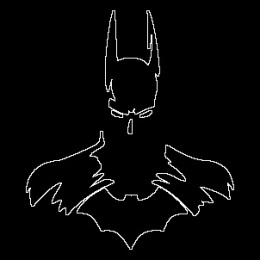To be honest, this is one of those few happy moments where I didn’t fret (not even a little bit) upon the announcement that the activity is to be done individually. This is probably due to the fact that this is just the second activity; and the difficulty of the tasks is designed to gradually increase as the semester progresses. Nevertheless, I really enjoyed recreating digitally scanned hand-drawn graphs and I think this was a good introduction in our image processing class.
The reason why I wasn’t worried is that I actually had an idea on how to do the whole thing and I was pretty confident that it will work. The only issue I have encountered in doing this activity is the arduous task of finding an appropriate hand-drawn/X-Y plotter graph. Gio and I first searched at the NIP library for some theses written in the late 1980’s or early 1990’s since they have encoded their works using typewriter way back. We did find about four possible plots, only to find out that the library doesn’t allow the scanning of thesis works without the consent of its writer. Since we had no way of reaching the authors, we decided to just look in our Plasma Physics Laboratory. Luckily, we were able to find two hand-drawn plots (at least the actual line of the graph) on the undergraduate thesis of Richell Taberdo Martinez entitled “Spectroscopic Analysis of the National Institute of Physics Plasma Experimental Rig II modified.”
After scanning the graph at 96 dpi, I started by getting the pixel coordinates of the ticks on both the X and Y axes of the plot shown in the figure below. Using Excel, I tabulated my data and obtained the equations for the conversion from the Y-axis pixels to breakdown potential (Vb) and the X-axis pixels to pressure (Torr). I did this by plotting the unit desired vs the pixel value and obtaining the resulting equation of the line.
Using the equations for conversion, I initially calculated the pixel coordinates of the 7 points marked with asterisks and then plotted it. I tried to make it as similar as the plot above so I also limited the Y – axis to 500 – 1100 V. The resulting plot superimposed with the original graph is shown below.
The recreated plot is denoted by the red line. As can be seen from the area between the 6th and 7th marker, the recreated plot is quite far from the basis. By getting additional points between the two markers, we can make this area smoother and more accurate. This step was done at all the parts between the markers to further improve the plot. The final version of the reproduced plot is shown below.
It can be seen that we have successfully recreated the digitally scanned plot via transformation of pixel coordinates to physical variable and application of ratio and proportion. From how the Excel plot looks compared to the original plot, we can also say that this method is effective in restoring and improving old plots that have been worn-out through time. This can also be extended to images and models of different systems.
At first glance, we can tell that the two series (scanned and recreated) perfectly coincide but if we zoom this in further, some deviations can be seen. While this may be solved by getting more and more points on the series, the actual problem lies in the error on the conversion of pixels to the physical value. This complication arises due to the fact that the X and Y axes has a width that is greater than 1 pixel; causing some inconsistencies in the transformation of the coordinates. For this activity though, I maintained the x [y] pixel coordinate constant as I was computing for the equation of the conversion of y – axis [x – axis] pixels to the breakdown voltage [pressure].
Overall, I am contented with the way this activity went and I am fulfilled that my initial plan actually worked. Since I have done all the required points in this activity and I fully understand all the concepts involved (which actually helped me realize some limitations), I belief I deserve a 12 in this activity.
![]()
P.S. My apologies if the self-evaluation paragraph entire post is awkward; it has been three years since I last wrote a blog.
References:
[1] Soriano, M. “Digital Scanning,” 2014.



